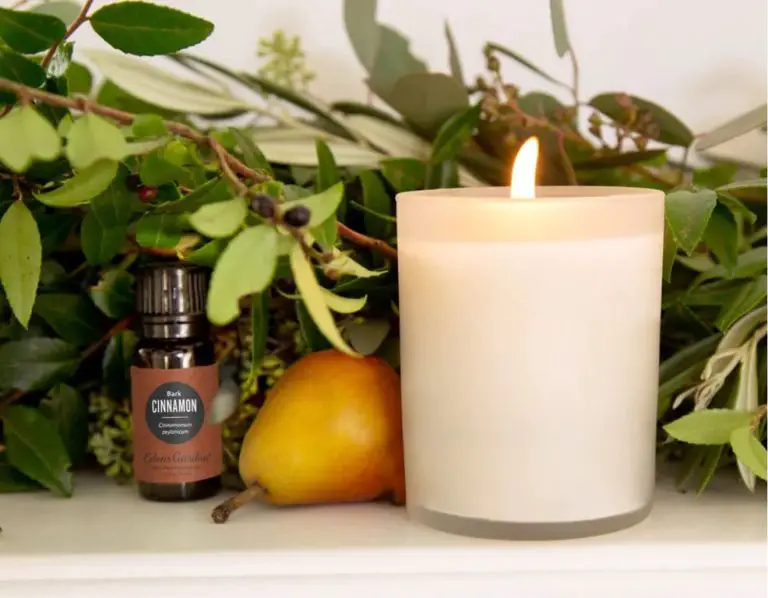What Are The Safest Candles For Wax Play?
Wax play is a form of sensual play that involves dripping or pouring warm wax onto the skin for erotic stimulation. It provides pleasurable sensations through the warm sensation of liquid wax followed by the tingly feeling as the wax cools and solidifies on the skin.
While wax play can be exciting, it does come with some safety concerns. The biggest risk is burns, as the wax can be heated to high temperatures. Using the wrong type of candle that gets too hot or drips wax that is difficult to remove can result in painful burns or skin damage. Additionally, getting hot wax in sensitive areas like the eyes, nose or genitals can cause harm.
To engage in wax play safely, it is extremely important to use the proper candles intended for sensual use, not standard decorative or household candles. The right candles are designed to melt at lower temperatures and formulated to be easier to remove from skin. Taking precautions around flame safety and application technique is also key.
Understand Different Types of Candle Waxes
There are several common types of waxes used for candles, each with their own properties that impact safety and performance for wax play. The main types are:
Paraffin Wax – Made from petroleum, paraffin wax has a low melting point and is highly flammable. It can burn at temperatures up to 1,400°F which poses risks for wax play. Paraffin also emits harmful chemicals like toluene and benzene when burned (Source).
Soy Wax – Made from soybeans, soy wax is considered one of the safest options for wax play. It has a low melting point between 115-135°F, making it easy to warm up and use on skin. Soy wax is also less flammable and cleaner burning than paraffin (Source).
Beeswax – Beeswax is another recommended option, made from honeycomb. It has a higher melting point around 140-160°F so takes a bit more warming, but is non-toxic and burns the cleanest of waxes. Beeswax is also less flammable than paraffin (Source).
Both soy and beeswax are good candle wax choices for safety and performance.
Recommend Soy Wax or Beeswax
When selecting candles for wax play, soy wax or beeswax are the safest options due to their lower melting temperatures and natural ingredients compared to paraffin wax. Soy wax melts at a temperature between 120-170°F, while beeswax melts between 143-160°F [1]. This is much lower than paraffin wax, which melts at 135-185°F.

The lower melting point of soy and beeswax reduces the risk of burns during wax play. Hot wax can cause serious burns, so choosing waxes that melt at cooler temperatures provides an extra safety buffer. Both soy and beeswax are also made from natural materials like plants and honeycombs, while paraffin is a petroleum byproduct.
Overall, soy and beeswax candles are recommended for safe wax play due to their lower melting points and natural ingredients. This helps prevent injuries and uses materials that are safer for intimate areas of the body.
Avoid Paraffin Wax
Paraffin wax, made from petroleum, coal, or shale oil, is commonly used in candle making because it is inexpensive and easy to work with. However, paraffin wax has some concerning properties that make it a poor choice for intimate activities like wax play:
Paraffin wax has a very high melting point, between 130-170°F depending on the type of paraffin used. This increases the risk of painful burns if the wax is applied directly to the skin (1). The high temperature also releases more scent and VOC chemicals into the air.
Additionally, paraffin wax is highly flammable with a very low flash point. Candles made from paraffin burn hotter and faster, creating a fire hazard if spilled or knocked over during intimate activities (2).
Finally, paraffin is not a natural product. It is manufactured from non-renewable petrochemicals through an extensive refining process. Research shows paraffin wax can release potentially harmful chemicals like toluene when burned (3). For health and safety, it’s better to avoid paraffin wax.
Instead, choose candle waxes made from natural materials like soy, beeswax, or vegetable oils. These burn cooler, safer, and more cleanly than paraffin.
Select Candles With a Low Melting Point
When choosing candles for wax play, it’s crucial to select candles with a low melting point. The ideal melting point for sensual wax play candles is between 120-130°F. Candles with a low melting point around this temperature range carry a significantly reduced risk of burns compared to standard candles which melt at much higher temperatures.
Paraffin wax, commonly used in typical candles, melts at temperatures ranging from 115°F to 185°F which is too hot and unsafe for intimate skin contact (source). Specialty sensual candles made specifically for wax play are formulated from waxes like soy, beeswax or low-melt paraffin to melt around the safer 120-130°F range.
Candles labelled as “low temp” or “low melt” indicate they are designed for sensual use. When browsing for wax play candles, checking the listed melting point is key – always opt for candles melting near 120-130°F for optimal safety and pleasure.
Choose Candles Specifically for Sensual Use
When selecting candles for sensual wax play, it’s important to choose products specifically marketed for that purpose. Look for candles labeled as “body wax” or “for sensual play.” These will be formulated to melt at lower temperatures that are safe for skin contact. General purpose candles like jars, pillars, and votives are not designed for body application and can burn at dangerously high heats.
When buying sensual candles, carefully read and follow all safety guidelines provided by the manufacturer. Reputable brands will indicate the proper melting point temperature and provide instructions on safe usage. For example, some may recommend holding the candle 6-12 inches above skin when pouring to allow the wax to cool to a safe level. Others may advise testing a small drip on yourself first before full application. Following these directions can help prevent burns and injury.
According to consumer reviews on Amazon.com, popular brands of body wax candles designed specifically for sensual play include Kama Sutra Low Temp Candles, JimmyJane Afterglow Massage Candles, and Bodhi Dog Melt Candles. Choosing an established, trusted brand can provide peace of mind.
Proper Candle Care
To reduce the risk of starting a fire or harming yourself, it’s important to maintain proper candle care. According to the National Fire Protection Association (NFPA), you should always trim the wick to 1⁄4 inch before lighting to avoid high flames[1]. Long or untrimmed wicks can create wild flames, produce more soot, and tunnel down into the wax. Trimming the wick prevents these risks.
You’ll also want to avoid any drafts or airflow around the candle, as this can cause the flame to be erratic. The NFPA recommends keeping candles at least 12 inches from anything that can burn, like curtains or upholstered furniture[1].
For added safety, consider using a candle warmer instead of an open flame. Candle warmers heat the candle from the bottom up, melting the wax to release fragrance without having to light a wick. This avoids the fire risks associated with open flames.
Safe Application Techniques
When engaging in wax play, it is crucial to apply the wax safely to avoid burns or injury. Here are some tips for safe application:
Test the wax temperature first before pouring it on your partner’s body. Allow a drop to fall on your wrist or inner arm to gauge the heat. It should feel warm, not hot. According to Cosmopolitan, the wax should be “almost too hot to touch, but not scalding” [1]. Adjust the height you pour from to control temperature.
Pour wax from a height of at least 18 inches above the body. The higher the pour, the cooler the wax will be when it hits the skin. Avoid pouring from a height where wax may splash or be difficult to control [2].
Avoid sensitive areas like the face, genitals, nipples and other erogenous zones. Only pour wax on areas with thicker skin that can handle the heat, like the back, chest, arms and legs [3]. Never pour wax on the neck or anywhere near airways.
Aftercare
Aftercare is a crucial part of wax play that should not be overlooked. It helps care for and soothe your skin after intense sensations. The first step is to gently peel off any remaining wax residue. Go slowly and avoid pulling off sections of skin. If the wax has hardened, you can soften it with a warm damp cloth. Next, treat any burns or irritated areas. Apply a soothing aloe-based moisturizer or a specialized sensual care ointment like SHA Sensitive Skin Gel to the affected areas. This will provide cooling comfort and promote healing. Avoid using ice directly on burned skin. Finally, apply a rich moisturizer all over to replenish hydration, nourish skin and restore suppleness. Coconut oil or shea butter work wonderfully. Massage it in gently using circular motions. Be extra attentive to sensitive zones. Proper aftercare helps minimize irritation and discomfort while maximizing pleasure during wax play.
When to Exercise Caution
Wax play can be an enjoyable sensual activity but there are some important safety considerations. Individuals with certain medical conditions or who are taking medications may need to avoid wax play or take extra precautions. For example, according to Sexual Health Alliance, those with diabetes, hemophilia, skin conditions like eczema or psoriasis, or who are taking blood thinners should consult a doctor before wax play, as they are at higher risk for skin damage (SHA’s Guide to Wax Play).
It’s also wise to avoid waxing sensitive areas of the body that are extra vulnerable to burning, like the face, neck, breasts, and genitals. Begin by waxing less sensitive spots like the back, arms, legs, and feet to test tolerance. According to Well and Good, the inner thighs and butt can be moderately sensitive erogenous zones to explore (A Beginner’s Guide to Wax Play).
Additionally, exercise caution when combining wax play with other activities like bondage that restrict movement. Having abilities to quickly communicate pain and remove wax are important safety measures. It’s also advised not to combine waxing with alcohol or drug use, as that can limit pain awareness. Overall, wax play requires focus, care, and preparation for a fun experience.




